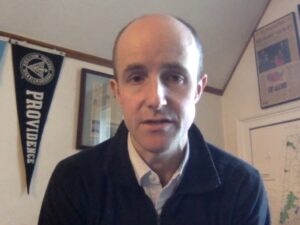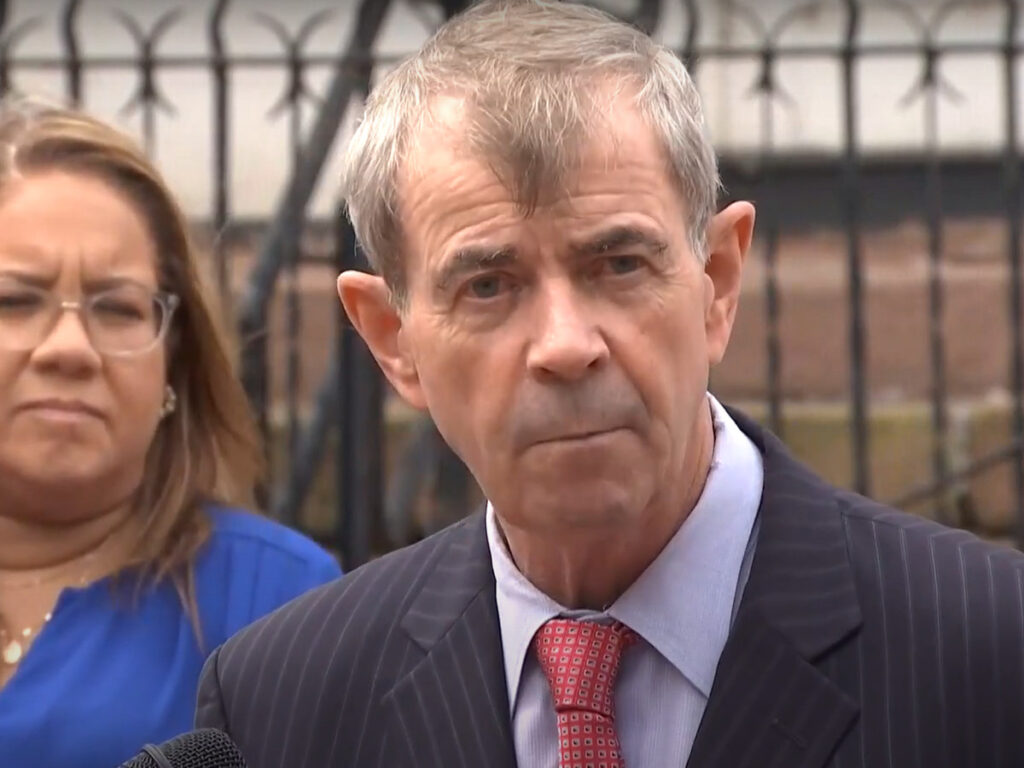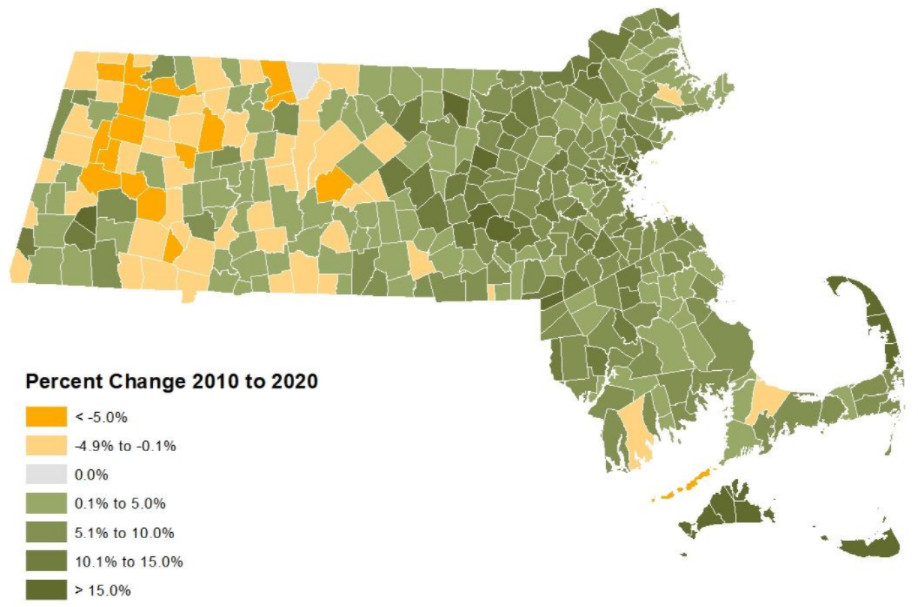Analysis: Galvin Says the Quiet Part Out Loud on the 413 & Its Economy…
Bill Galvin has many titles: secretary of the commonwealth; election administrator; former state rep; prince of darkness. But during a trip to the 413 two weeks ago, he added another: soothsayer.
Speaking at Court Square, Galvin praised Mayor Domenic Sarno, City Clerk Gladys Oyola and community groups’ efforts to count all of Springfield’s citizenry. But population decline was painfully common in the 413 despite the whole commonwealth’s rapid growth among Northeastern states. Even Springfield’s population 1.9% growth paled in comparison to Massachusetts’ second city, Worcester, which grew a whopping 14%.
Underpinning regional shrinkage, the secretary said, was an economy falling behind the statewide one.
“The bottom line is this. This is a call to action,” Galvin said.
“The reality is there has to be a concentrated effort from the state, at the state level,” he added.
By charging the state with the task, Galvin bluntly laid out the scale of the task. Such rhetoric is not totally unfamiliar from Western Mass electeds. Still, this was probably the most explicit a statewide official has been about both the cost of inaction.
The Census is Galvin’s bailiwick. Also in charge of running elections, his office has, over the centuries taken on a role of essential to a democracy: counting the people In his remarks earlier this month in Springfield, he said that the state scoured every inch to ensure everybody was counted. More than 7 million people live in the commonwealth and many communities exceeded expectations in their counts. That was less common in the West.
The numbers were not catastrophic for Western Mass and Springfield in particular. However, they followed longstanding trends that ensure the region less and less of a voice despite mounting needs.
The problem was not necessarily older, struggling cities. Cities like Lynn and Lawrence, peers of Holyoke and Pittsfield’s, experienced near-explosive growth.
“It’s reflected in the fact that people that went into some of the older cities that certainly have all the same problems that older cities in the west had,” he said. “I think the answer is lack of economic opportunity.”
Galvin did not proffer specific solutions. That is for the legislature. Yet, in acknowledging housing policy in Springfield, he may have been critiquing NIMBYism in other communities. However, the call for state action highlights how the economic efforts of even state’s third largest city were simply insufficient.
A spokesperson for the Massachusetts Executive Office of Housing & Economic Development did not respond to an invitation to comment on Galvin’s press conference.
Officials past and present from shrinking areas of the West agreed the state had to act.
Ben Downing, now a Democratic gubernatorial candidate and East Boston resident, represented the Berkshires in the Senate for 10 years. While he is running against the incumbent governor, Charlie Baker, a Republican, Downing acknowledged that both parties on Beacon Hill have failed Western Mass. The declining numbers out here make things even more difficult.
“There is a negative feedback loop where you have declining population leading to representatives and senators covering more area,” he said. “It makes the work of building coalitions that much tougher.”
Some communities are unsure where they would put more people if they were growing apace. Greenfield Mayor Roxann Wedegartner said her city’s development plan only accounts for 15% growth. It grew 1.8% or 312 people since 2010, which leaves it roughly 900 people short of its 1990 peak.
“We’ve just been taking note of the fact that anecdotally, based mostly on real estate sales, since the pandemic, we have had a very strong real estate market, which is attribute to a small extent to people moving out of the cities,” she said.

Mayor Wedegartner: The state has to think past population alone. (via Town of Greenfield)
But that does not mean her city and Franklin County could not use more help. Wedegartner said the Upper Valley had less room for error when the coronavirus throttled the economy. Plus, the price tag for investments Greenfield and its environs need may mismatch with Franklin County’s resources.
“I think the state could look at it from a regional standpoint as well and stop basing it on population alone,” she said.
Galvin observed that Western Mass has been “shortchanged” for some time, a fact that was “not breaking news.”
The region has excellent natural resources, good people and solid community spirit the secretary said. Galvin rejected the trope that Greater Boston’s advantage was its great hospitals and schools as the 413 also has both. The answer may be infrastructure like East-West rail or broadband. It may need to be something else entirely.
“Otherwise, these changes in population we’ve seen are going to continue,” he said.
Some relief could come from the American Rescue Plan funds that already passed Congress. Mayor Wedegartner is already looking ahead to the big infrastructure bill. Both classical and new infrastructure on her wishlist. She cited a spat of watermain breaks, a sign of overdue water and sewer work. Greenfield has done well attracting startups with its municipal fiber program built on “a shoestring.” Yet, they need money to build out broadband network fully.
“But when they say broadband, I want to make sure they’re not just thinking comcast gets all the money,” Wedegartner said wrly.
Downing noted his native Pittsfield and Berkshire County both lost population between 2010 and 2020. This trend is not new.
The arts economy and tourism have become bright spots. However, big ballyhooed developments helicoptered into Western Mass communities have utterly failed to match the industrial engines that Berkshire and Pioneer Valley cities have lost.
“Our communities have been pitched those savior solutions,” he said. “If it’s pitched to be the be all and all, it’s just not going to be that.”
One such example was casinos. A decade after the gaming law was passed, the license intended for Massachusetts’s southeast remains theoretical. MGM Springfield, while not a failure, has not exactly sparked a tide of investment in the South End and downtown even before COVID-19.
To many local pols, economic development is anything that spends money. For example, state building project come about through regular bond bills rather than a specific program of renewal. Political leaders become siloed even when appearing to move in unison. Projects can turn into turf wars.
A new courthouse may be necessary in Springfield. Yet, it’s not clear city and state leaders can move a plan that values best planning principals. Some landowner’s influence or hope for a helpful headline may be too powerful.
Meeting Galvin’s call will be much bigger than one project. Yet, it need not realign the commonwealth’s economy so much as bring outstate Massachusetts up to economic speed with Greater Boston.
Even without the loss in representation in Western Mass—the region is likely to at least lose a rep seat—this kind of investment will require votes from those who represent the rest of the state. This may be among the most difficult parts of heeding Galvin’s call.

Downing said the state and especially Metro Boston have to see the West’s revival benefits everybody. (still via Zoom)
As a senator, Downing often had to deal with this himself. He said the state could start by understanding a job created anywhere in the state is not of equal value. Well-paid jobs in the West may have bigger impacts in their communities than yet another job in Kendall Square or the South Boston Seaport. At the same time, contract manufacturing jobs in the West’s cities must receive the same attention and value from state officials as those found at innovation hubs inside 128.
But echoing other electeds, he said Eastern Massachusetts must realize it is in its interest to improve the 413. While the Boston area needs tremendous investment, too, it may never be enough if the 413 is not part of the solution.
“I am skeptical that we are going to solve the housing and transportation of Greater Boston without an intentional, urgent effort” in Western Mass, Downing said.
In Springfield, Galvin took pride in the state’s census efforts despite Trump administration chicanery and the pandemic. Some results definitely surprised and there may be specifics over which to quibble. However, bottom line population figures should be accurate. He left little room for communities in the West to appeal the results as cities in other states plan to do.
“Instead of arguing with the facts, which are the populations went down in these communities,” he said, now is the time to be “accepting them and making a plan for change.”
“We need to make sure that for the next 10 years, our job one is to get jobs to Western Massachusetts,” Galvin continued.


